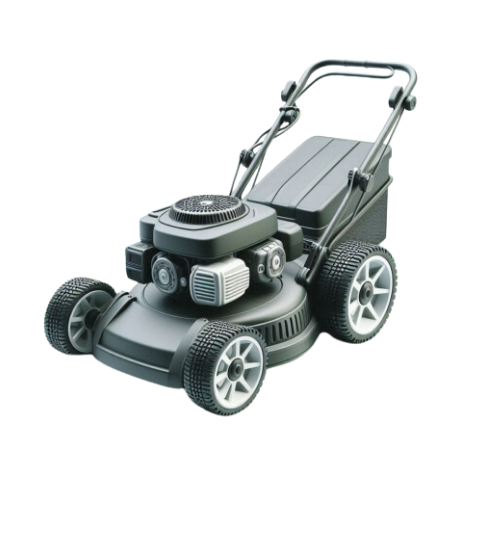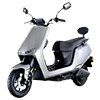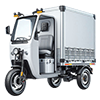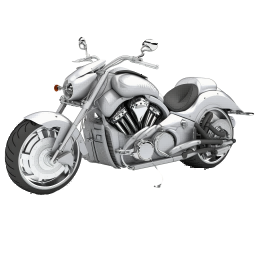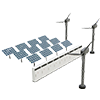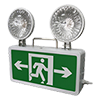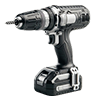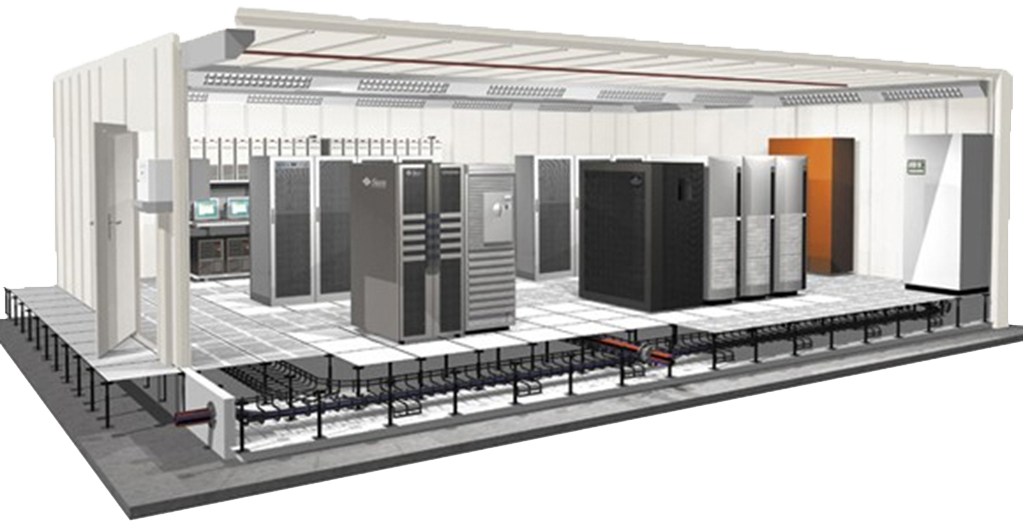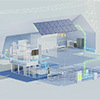AGM vs Flooded Battery: Choosing the Right One
Release time:
2025-10-17
Share:
The AGM vs Flooded Battery comparison ultimately comes down to their sealing and internal design. Traditionally, Flooded batteries used free-flowing liquid electrolyte, while AGM (Absorbent Glass Mat) batteries store the same electrolyte absorbed within fiberglass mats, creating a sealed and maintenance-free structure. Although improved Flooded types can also use AGM separators , the conventional Flooded battery and the fully sealed AGM still differ significantly in performance, maintenance, and lifespan. Let's take a closer look at how these two classic technologies compare in real-world use.
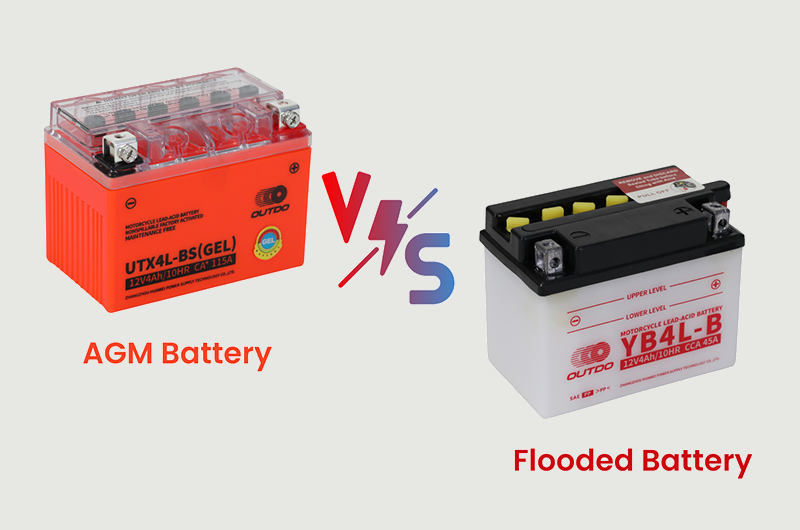
Part 1: AGM vs. Flooded Battery: A Head-to-Head Comparison
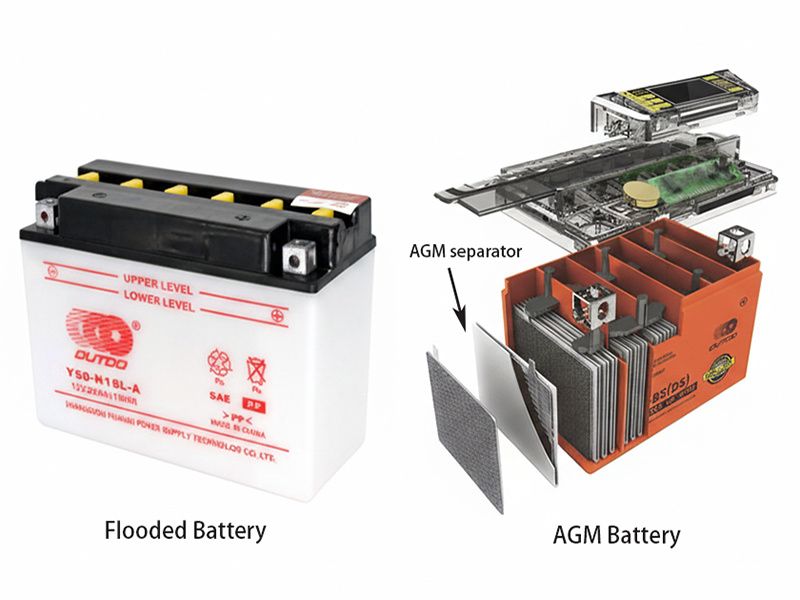
1. Design: What's Inside the batteries?
The main difference between AGM and Flooded batteries is their internal design. Traditional Flooded battery (Wet Cell) is an unsealed design with removable caps for maintenance. The liquid electrolyte surrounding the lead plates can spill out and must be installed upright. By contrast, AGM batteries absorb the electrolyte into compressed fiberglass mats, which are tightly packed between the lead plates. An AGM battery is sealed, offering spill-proof and high vibration resistance, and allowing flexible installation.
2. Power: Who Starts Stronger?
The performance difference between AGM and Flooded batteries is rooted in internal resistance. In a Flooded battery, energy must travel through a liquid electrolyte, a less efficient path that creates higher resistance and causes a voltage drop during starts. By contrast, an AGM battery's design—compressing electrolyte-soaked fiberglass mats between the plates—creates a far more direct, low-resistance pathway. This fundamental advantage allows an AGM to deliver more powerful starting bursts.

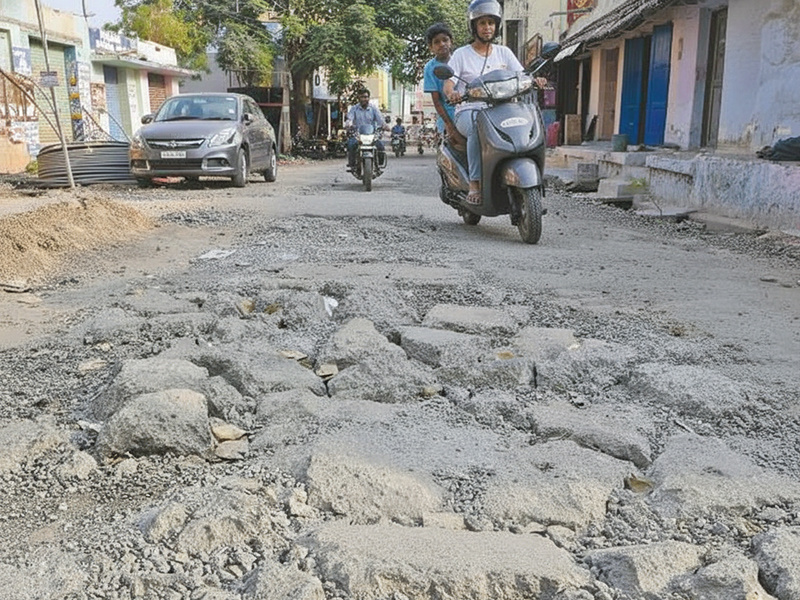
3. Lifespan: Which Battery Lasts Longer?
A battery's lifespan is often shortened by vibration and the loss of active material from the lead plates. In a Flooded battery, the plates are surrounded by liquid electrolyte that offers no structural support, so shaking can dislodge material and reduce capacity. By contrast, AGM batteries use tightly compressed fiberglass mats soaked with electrolyte acting as a damper, making them more durable and longer-lasting, especially under high-vibration conditions.
4. Charging Efficiency and Methods
Like a hallway's design determines how people can move through it. A Flooded battery is like a wide, open hallway; the liquid electrolyte provides plenty of space. It means the path for energy is less organized, energy (the "charge") moves more slowly, creating higher internal resistance. An AGM battery is like a high-speed lane. The electrolyte-soaked mats create a low-resistance highway for energy. This allows it to reacts faster than a flooded battery. This ensures the battery charges quickly.
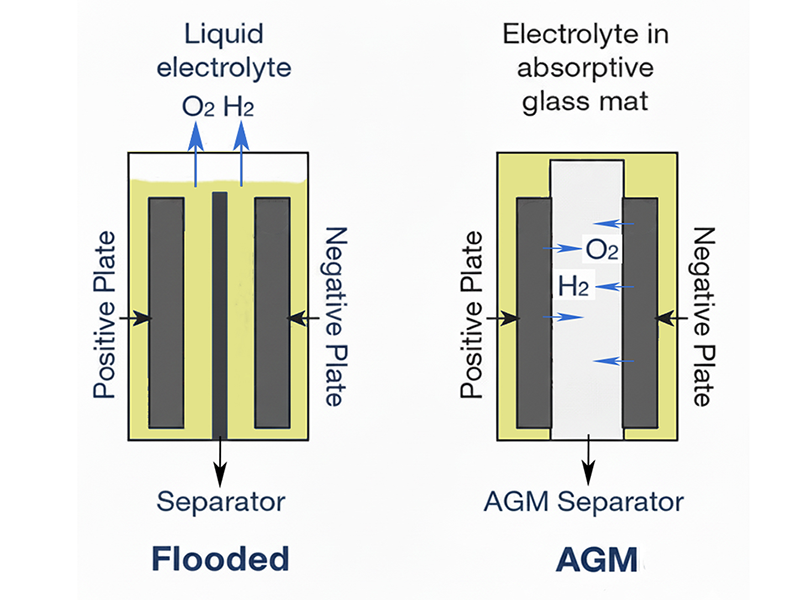
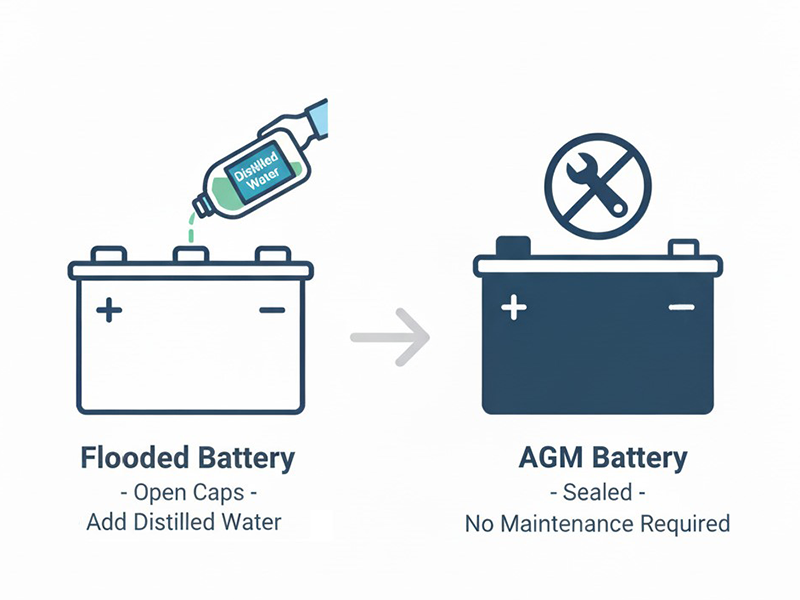
5. Maintenance: Open vs. Closed Systems
The key Maintenance difference is that flooded batteries are an open system. Hydrogen and oxygen gases escape during charging, causing water loss, which requires regular maintenance by adding water. Whereas AGM batteries are closed, its compressed, porous mats that allow oxygen and hydrogen to recombine internally into water, which makes them maintenance-free, offering a convenient "set it and forget it" experience. This highly efficient, self-sustaining recombination cycle is also the core of VRLA (Valve Regulated Lead-Acid) technology.
6. Safety Comparison: Spills and Gas
The chemical safety differences between Flooded and AGM batteries are primarily determined by electrolyte and gas. Flooded batteries can leak corrosive acid if tipped and release explosive hydrogen gas during charging, requiring a well-ventilated area away from any potential sparks. In contrast, AGM batteries absorb their electrolyte in fiberglass mats, making them spill-proof. Furthermore, its sealed, recombinant system prevents gassing during normal operation. These safety characteristics not only reduce risks but also simplifies shipping, lowers packaging and insurance requirements.
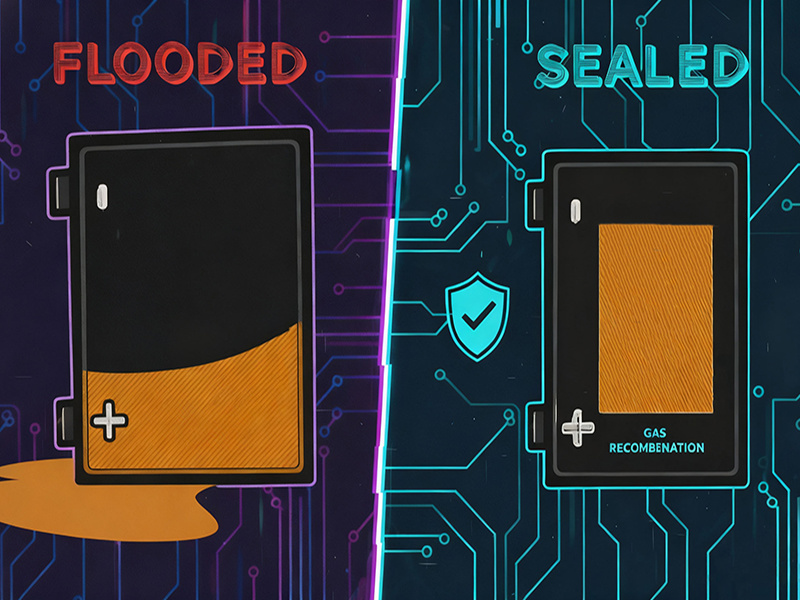
7. Limitations of AGM Battery: Where Flooded Batteries Can Have an Edge
A flooded battery tolerates charging variations better. Their liquid electrolyte helps disperse heat and handle voltage fluctuations without serious damage, making them far more forgiving than AGM battery, which are sealed and sensitive — constant overcharging can harm its fiberglass mats. Flooded batteries also work comfortably with simple chargers; even if the voltage control isn't perfect, the risk of damage is lower. If you're using an AGM battery, be sure to use an AGM compatible charger or the original one the manufacturer offers.
A unique advantage of a Flooded battery is its ability to undergo an equalization charge—a controlled overcharge that serves as a powerful maintenance tool to remix stratified acid and break down heavy sulfation. However, this process is strictly forbidden on an AGM battery, as the intense gassing would cause irreversible damage to its sealed design. For an AGM, reversing sulfation is limited to the gentler pulse conditioning from a smart charger, which is effective only on mild to moderate cases. This gives the flooded design a unique recovery option to extend its service life, a maintenance flexibility that the sealed AGM technology simply does not have.
Part 2: AGM VS. Flooded Batteries — Pros and Cons
|
AGM Batteries |
Flooded Batteries |
|
Core Advantages of AGM Battery1. Spill-Proof 2. Vibration-Resistant 3. Higher Power Output 4. Faster Charging Speed 5. Longer Service Life 6. Truly Maintenance-Free 7. Simplified Shipping & Storage 8. Lower Total Cost of Ownership Potential Disadvantages of AGM Battery1. Higher Price: A larger initial investment is required. 2. Sensitivity to Overcharging: Requires a proper, AGM-compatible charger. |
Core Advantages of Flooded Battery1. Maintainable with Equalization 2. Tolerant of Basic Chargers 3. Lower Upfront Cost Potential Disadvantages of Flooded Battery1. Requires Regular Maintenance: Must periodically check and add distilled water. 2. Spills & Vibration: Liquid acid can leak, and internals are easily damaged by shaking. 3. Shorter Service Life: More vulnerable to degradation, leading to a shorter life. 4. Safety & Installation Limits: Vents flammable gas and must be installed upright. |
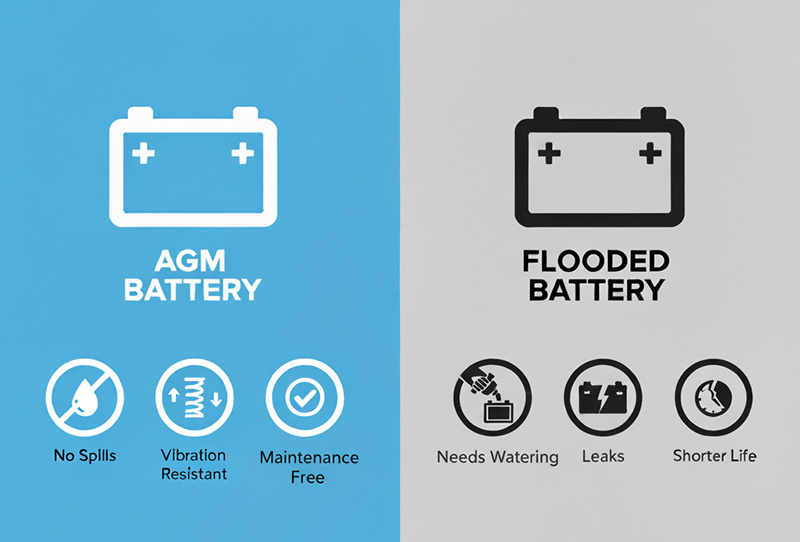
Part 3: Other Market Options
1. Enhanced Flooded Battery vs. AGM
An Enhanced Flooded Battery (EFB) and an AGM battery are both upgrades over traditional batteries, but they serve different purposes. The EFB batteries are a cost-effective car start-stop battery. AGM batteries provide high-performance technology for a wider range of applications beyond start-stop systems, including motorcycle starting batteries and emergency jump starters. In short, the EFB is a specialized automotive upgrade, while the AGM serves as a universally capable, premium power solution.
2. AGM Battery vs. Lithium Battery
Both AGM and flooded batteries belong to the lead-acid batteries, while lithium batteries (typically LiFePO4) use a completely different chemistry. Lithium batteries are lighter and have a much longer cycle life, but they are also significantly more expensive. Besides that, compared with lead-acid batteries, lithium batteries carry greater safety risks, being more prone to thermal runaway or even fire. AGM batteries are more cold-resistant and easier balance among performance, cost and safety, making them the best choice for most users. Lithium batteries are mainly used in racing or professional applications where cost is less of a concern.
3. AGM Battery vs. Sodium-ion Battery: The Proven vs. The Future
Sodium-ion batteries, as one of the latest battery technologies developing rapidly. Research from Stanford University predicts that by 2030, sodium-ion batteries will reach prices comparable to lead-acid batteries, though they will still be slightly higher. AGM batteries, with their mature manufacturing history and cost advantages, continue to dominate the starter battery market.
FAQs
Are AGM batteries better?
Generally speaking, yes. AGM batteries offer better performance, greater convenience, and a longer lifespan, and their long-term cost is often similar to that of flooded batteries.
How to Charge an AGM Battery?
AGM batteries use a multi-stage charging process: first, a rapid “bulk” charge, followed by “absorption” and “float” stages. This ensures a full charge and protects internal components. To charge an AGM battery, using the manufacturer-matched charger or choose a smart charger with AGM or VRLA mode. The charging current is typically 10–20% of the battery’s capacity (Ah), with a charging voltage of 14.4–14.7V and a float voltage set at 13.2–13.8V.
Is AGM battery maintenance free?
Yes, AGM (Absorbent Glass Mat) batteries are often labeled as maintenance-free because they are sealed and do not require regular topping up of electrolyte with water. The absorbed electrolyte minimizes water loss, and the internal design prevents spillage.
How long do AGM batteries last?
AGM batteries used for motorcycle starting typically last 4 to 7 years under normal conditions. Proper charging, storage, and usage habits can help ensure the battery reaches its maximum lifespan.
Factors affecting AGM battery lifespan:
1. Depth of Discharge (DOD): Frequent deep discharges shorten battery life.
2. Temperature: High temperatures accelerate battery aging.
3. Charging method: Using an improper charger or overcharging can cause premature failure.
4. Maintenance: Although AGM batteries are considered “maintenance-free,” regular checks still help extend battery life.
Typical lifespan of AGM batteries for different applications:
5. Cyclic use (e.g., power tools, solar systems): 4–7 years
6. Standby/backup (e.g., UPS, uninterruptible power systems): 6–10 years
7. Automotive/motorcycle starting batteries: 4–7 years
How do I know if my battery is AGM?
Most AGM batteries will be clearly marked "AGM" or "Absorbent Glass Mat." AGM batteries are sealed, produce no sloshing sound, and have a flat top, unlike traditional flooded batteries which often have removable caps for maintenance.
When should I replace my AGM battery?
Replace your AGM battery if you notice slow engine cranking, dimming headlights when the engine is off, or if you frequently need jump-starts.
How do AGM batteries perform in cold weather?
AGM batteries handle cold weather better than traditional flooded batteries. Their lower internal resistance allows them to start your motorcycle easily in winter. However, extremely cold conditions can still reduce battery power. To maintain optimal performance, keep the battery fully charged and avoid prolonged exposure to freezing temperatures. You can also replace it with a more cold-resistant sodium-ion battery.
Conclusion
Choosing between AGM and Flooded batteries depends on your priorities. AGM batteries offer superior performance, faster charging, longer lifespan, and maintenance-free convenience. Flooded batteries are more affordable but require regular maintenance and are more vulnerable to vibration and spillage. For reliability, safety, and long-term cost savings, AGM remains the high-performance choice, while Flooded batteries work well for budget-conscious or less demanding applications.
Previous Page:
FAQ
Latest Information


